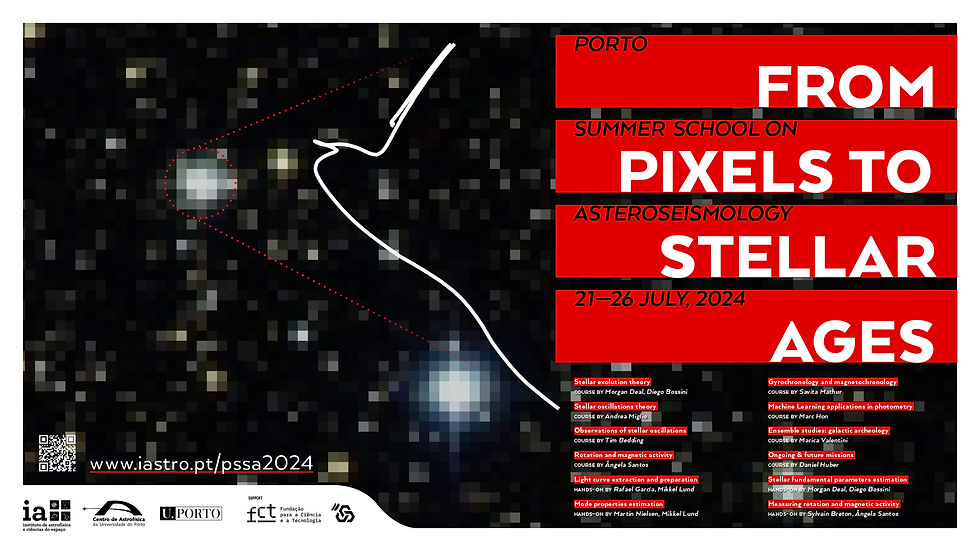World experts in stellar astrophysics gather in Porto for TASC8/KASC15
- Tiago Campante
- Jul 28, 2024
- 3 min read
Updated: Jul 29, 2024
The TESS/Kepler Asteroseismic Science Consortia (respectively TASC and KASC) consist in international scientific collaborations formed around the asteroseismic activities of NASA's TESS and Kepler space missions. An annual series of conferences, the most important in the field of asteroseismology, has been held since their inception. This culminated in the organization, in July 2024, of the 8th TESS/15th Kepler Asteroseismic Science Consortium Workshop (TASC8/KASC15) in Porto, Portugal. It was my distinct privilege to have chaired both the Scientific Organizing Committee (SOC) and Local Organizing Committee (LOC) of the TASC8/KASC15 Workshop.

The past decade has witnessed significant advancements in the development and application of precise asteroseismic probes of stellar astrophysics, covering different aspects of the physics in various types of stars. Asteroseismology has emerged as a powerful tool, successfully integrating with other techniques to study stars, planetary systems, and stellar populations. The ongoing refinement of the theoretical framework, through improved models, and the employment of precise data analysis methods continue to broaden the influence of asteroseismology on stellar astrophysics in general.
TASC8/KASC15 welcomed the international astronomical community to Porto and aimed to serve as a platform for a comprehensive review and discussion of the latest findings in the field of asteroseismology. The focus was placed on new ways of improving the physics in stellar models, addressing aspects such as convection, angular momentum transport, magnetic fields, and mixing. Additionally, the workshop delved into approaches for leveraging the wealth of existing and upcoming data. Recognizing the synergies with other topics, ranging from Galactic astronomy to exoplanets, the program also featured sessions dedicated to these interdisciplinary connections.

There were a total of 214 registered participants at the conference, of which 189 on-site and 25 online. Gender distribution was as follows: 31% Female, 69% Male, and <1% Other. For reference, 21.9% of the members of IAU are women. That percentage is higher among its Junior Members (33%), however. The scientific program was rich and diversified. There were 17 invited and 62 contributed talks. We received 114 abstracts (pressure factor of 1.8) for contributed talks, 3/4 of which by students and young postdocs. This is definite proof of the vitality of our community. Moreover, there were 123 posters, 114 physical and 9 online. Conference proceedings will be published here.
The conference was followed by a Doctoral School, again organized by members of our research group. The Porto Summer School on Asteroseismology brought together 50 students and 13 invited lecturers to the nearby town of Vila do Conde. Students from institutes from all over the world attended the School, namely, from Europe (33), Oceania (6), North America (5), Asia (5), and Africa (1). Gender distribution among students was as follows: 36% Female and 64% Male.

Topics addressed at the School included the information that can be extracted from photometric data, particularly from high-frequency brightness variations through asteroseismology, as well as from low-frequency variations due to the presence of active regions. The school featured a series of theoretical classes and hands-on tutorials, during which participants learned how to transform the photometric data into stellar properties, effectively going from pixels to stellar ages. It did not only focus on more traditional methods, but it also addressed the use of machine learning techniques, which are required on account of the extraordinary growth of available data. School proceedings will be published here.

The organization of both events shows evidence of the international leadership of the researchers in our group and, therefore, of the Instituto de Astrofísica e Ciências do Espaço. And we were absolutely delighted to have hosted so many of our colleagues and friends for the past couple of weeks!
Comments